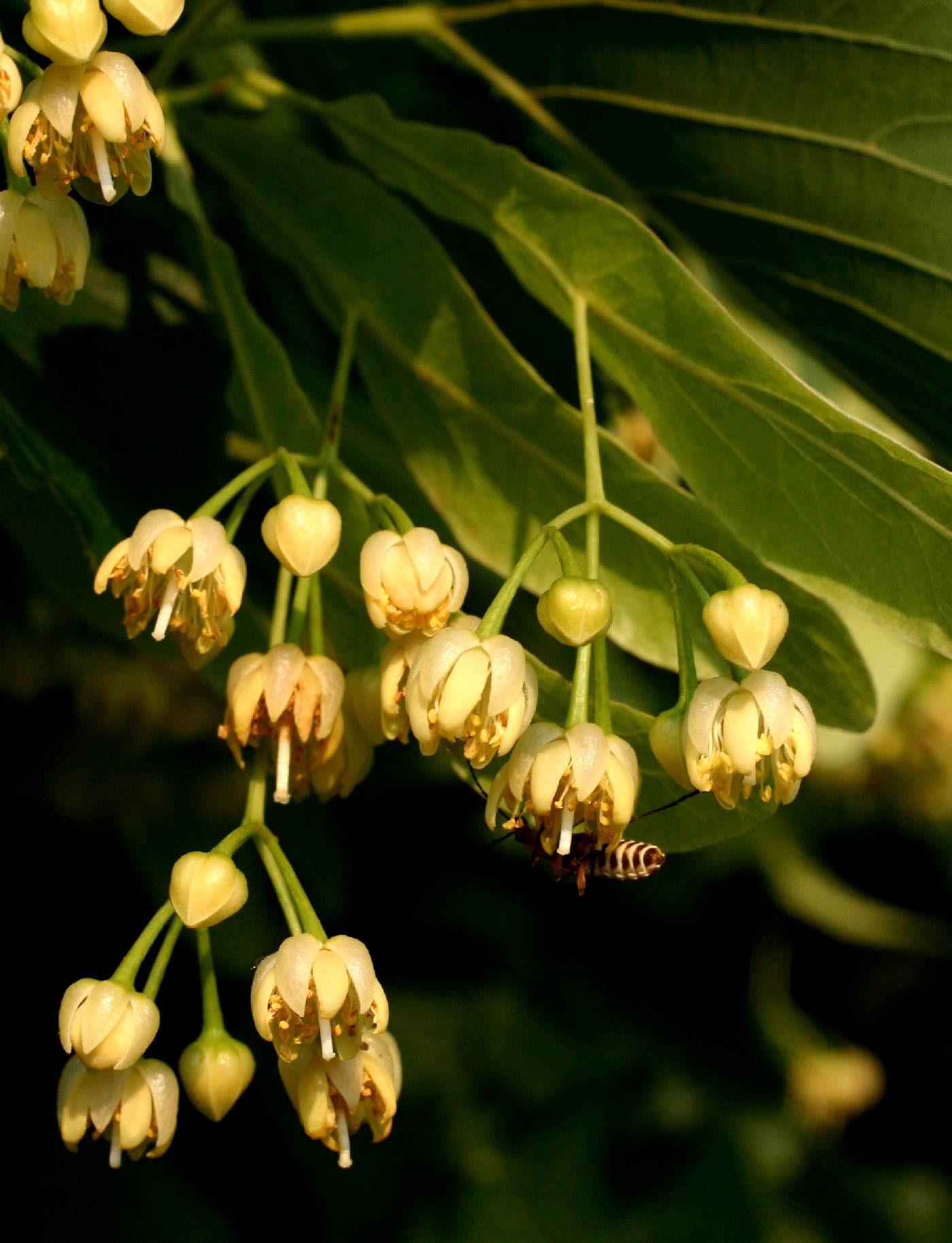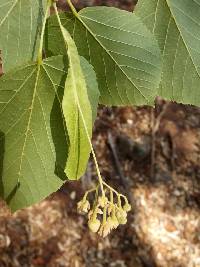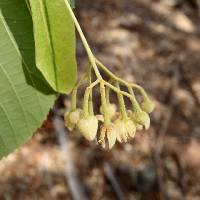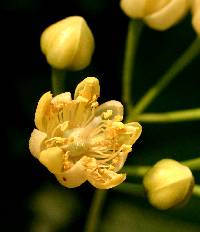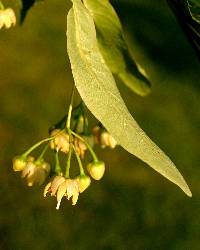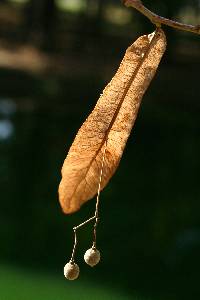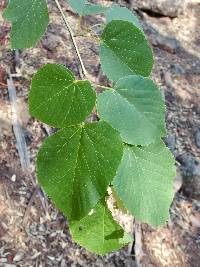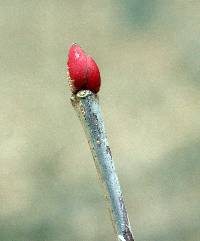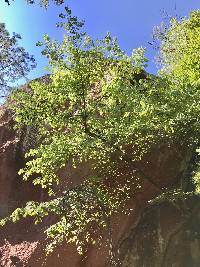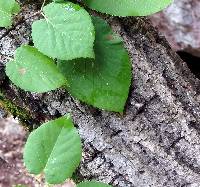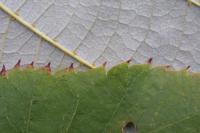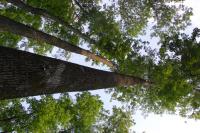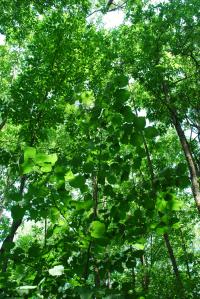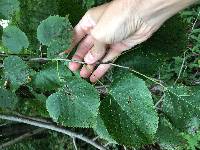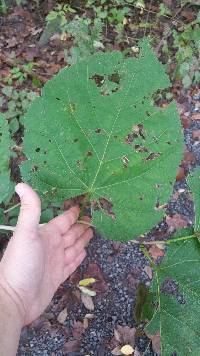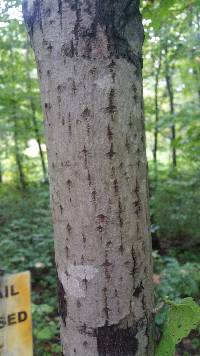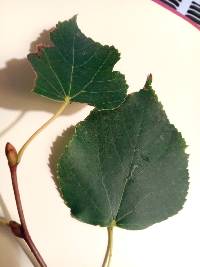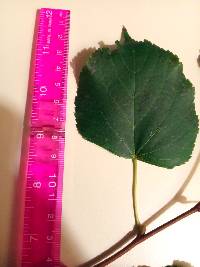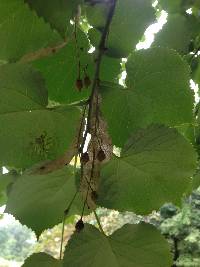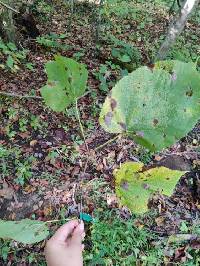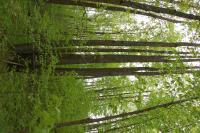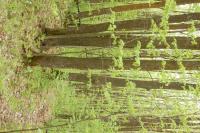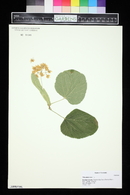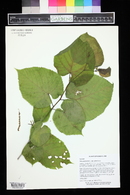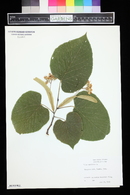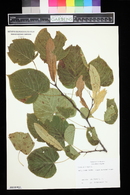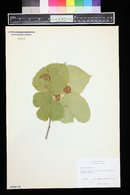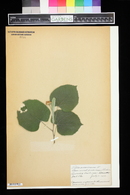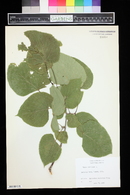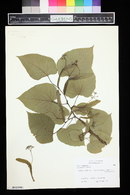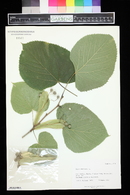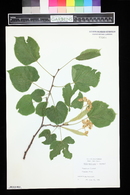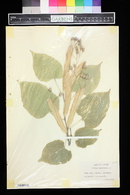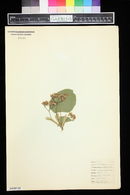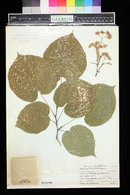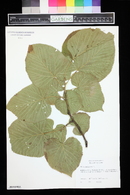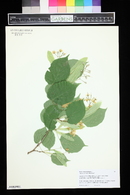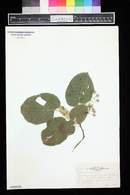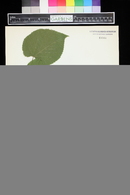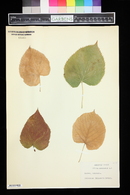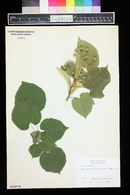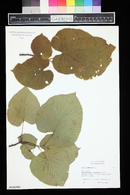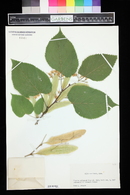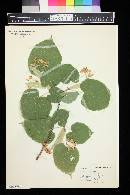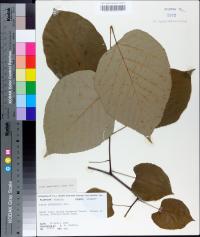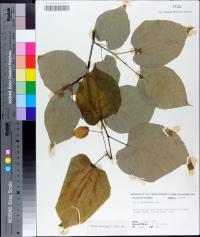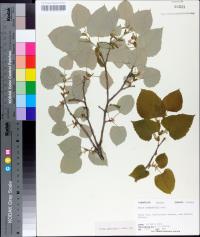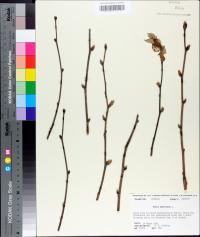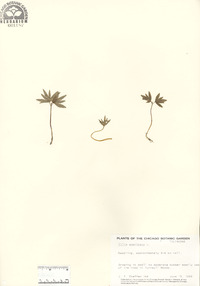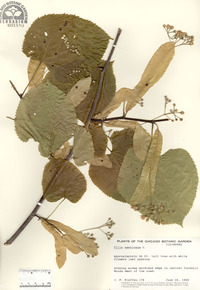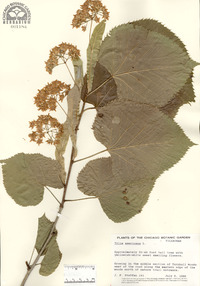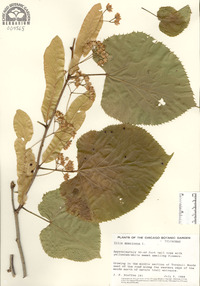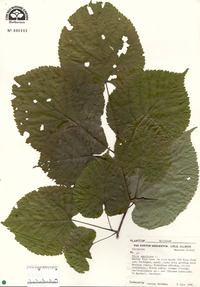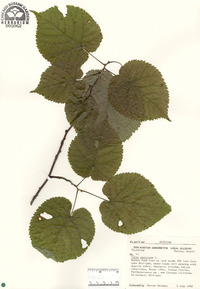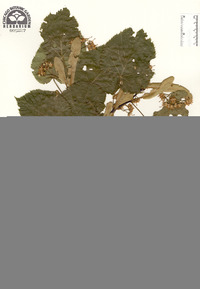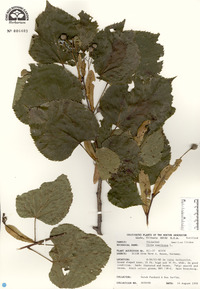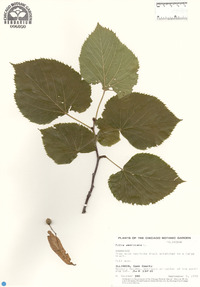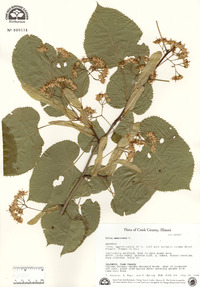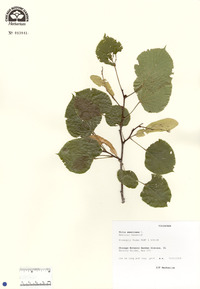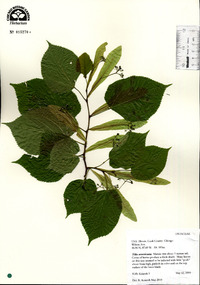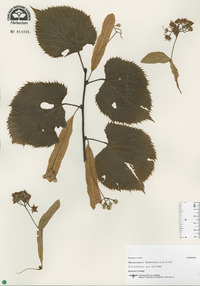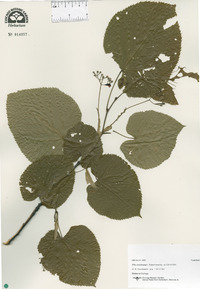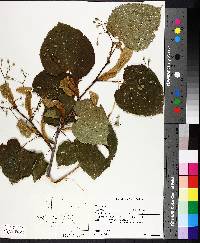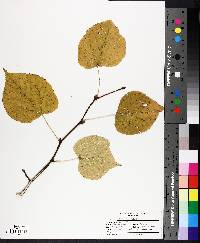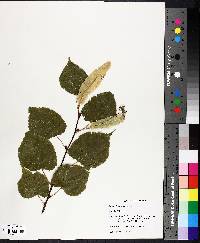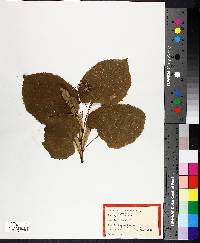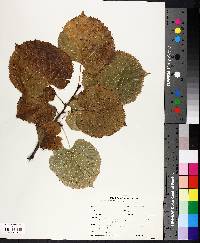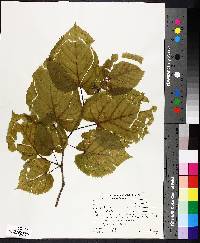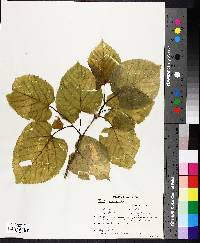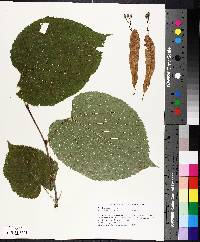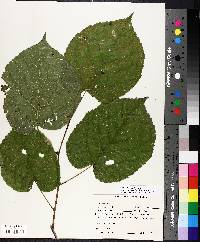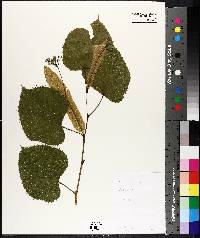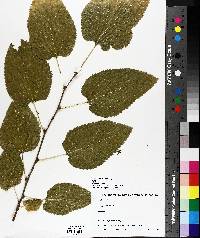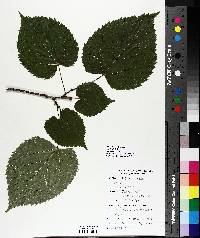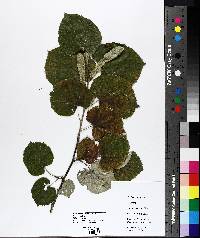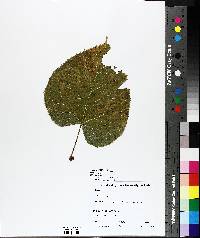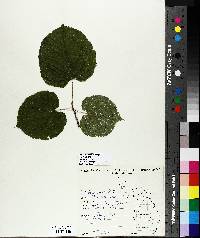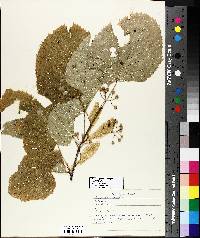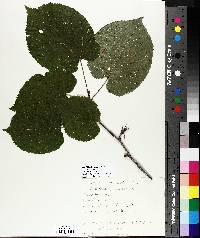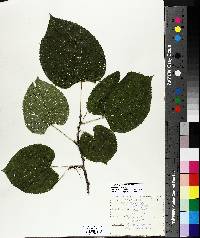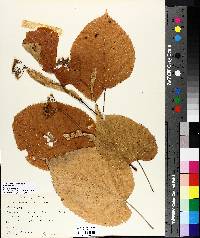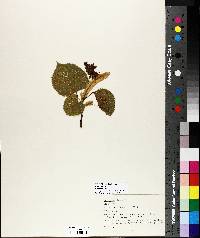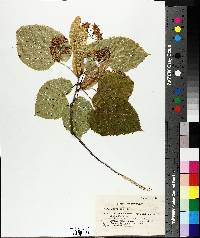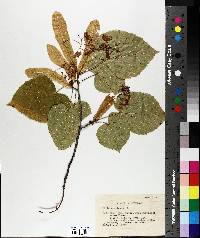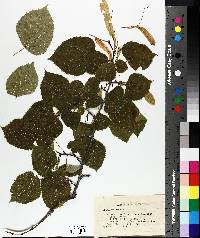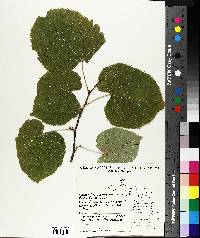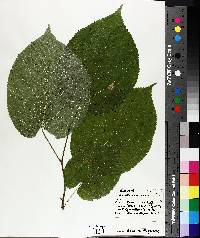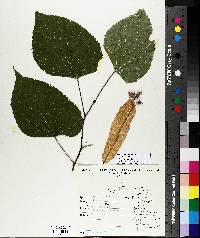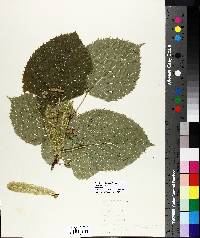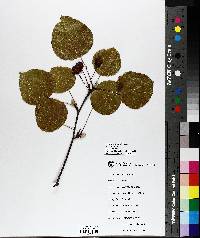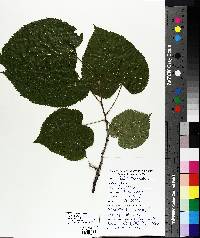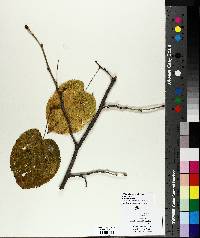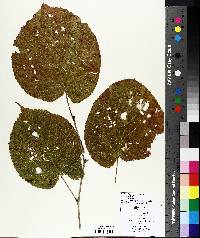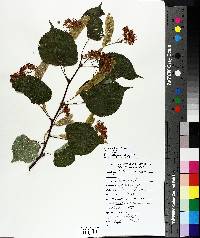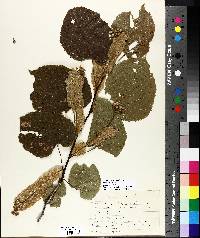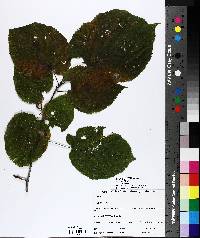
|
|
|
|
Family: Malvaceae
American Basswood
[Tilia alabamensis Ashe, moreTilia americana f. laxiflora (Michx.) V. Engl., Tilia cocksii Sarg., Tilia crenoserrata Sarg., Tilia nuda var. glaucescens Sarg., Tilia opposita Ashe, Tilia relicta Laughlin, Tilia stellata Hartig, Tilia texana Sarg., Tilia velutina Mack. ex V. Engl., Tilia venulosa var. multinervis Sarg.] |
Medium-sized to large tree 18 - 25 m tall, trunk diameter 40 cm - 1 m Leaves: alternate, stalked, green above, paler and sometimes with tufts of hair beneath, 12 - 15 or more cm long, 7 - 10 cm wide, obliquely heart-shaped with an asymmetrical base and pointed tip, coarsely toothed, thin, and firm. Flowers: long-stalked, in drooping clusters attached to a yellowish, paddle-shaped bract, greenish yellow to white, small, hairy, fragrant. Sepals five. Petals five. Fruit: a hard, woody nut in long-stalked clusters, light brown or gray, 6 mm in diameter, spherical, finely hairy, with a short-pointed tip. The stalks are attached to a yellowish, paddle-shaped bract. Bark: brown, thick, and deeply furrowed into long, narrow, flat-topped, scaly ridges. The ridges are nearly parallel and are sometimes interlacing. Twigs: slender, stout, gray or brown, somewhat zigzagged. Leaf scars half-elliptical, with three or more bundle scars. Buds: shiny green or reddish brown, 6 mm long, egg-shaped, pointed, lopsided. Bud scales usually two. Form: broadly rounded with a straight trunk. Sprouts often growing at the base. Similar species: The dense coat of hairs on the leaf undersides distinguishes variety heterophylla from T. americana. Flowering: mid-June to mid-July Habitat and ecology: Very common in dry to moist woods. Also grows in the dry conditions of high dunes found near Lake Michigan and the steep slopes of riverbanks and ravines. Occurence in the Chicago region: native Notes: The wood of Tilia americana is not very durable, but is used for boxes, crates, furniture parts, interior trim, veneer, plywood, pulp, fuel, and hand carving. Although planted as an ornamental, European species are more commonly used. Native Americans made rope from the bark of its young stems. Etymology: Tilia is the Latin name for the linden or basswood tree. Americana means "from America" (North or South). Author: The Morton Arboretum Tree to 40 m; lvs broadly ovate to subrotund, mostly 7-15 cm, sharply serrate, cordate or truncate at base; pet narrowly oblong to oblanceolate, 7-12 mm, tapering to the base; fr subglobose, 6-8 mm; 2n=82. Rich woods; N.B. to Man., s. to Fla. and Tex.; disjunct in Mex. July. Four vars., two with us. The mainly northern var. americana, American b., extending to s. to nw. N.C. and e. Okla., has the lvs green beneath and glabrous to sparsely stellate- hairy (or more densely so when young), commonly with conspicuous tufts of hairs in the vein-axils beneath. (T. neglecta, an introgressant toward the next var.) The mainly s. Appalachian var. heterophylla (Vent.) Loudon, white b., extending n. to sw. Pa. and s. O., w. to s. Ill., with outliers n. and w., is more hairy, the lvs permanently covered beneath with fine white or brown stellate hairs. (T. heterophylla; T. michauxii; T. monticola; T. pubescens)
Two European spp. with mostly smaller (5-10 cm) lvs and without staminodes escape locally from cult. T.
platyphyllos Scop. has strongly 5-ribbed frs, whereas T. cordata Mill. has the frs only weakly or scarcely ribbed. Gleason, Henry A. & Cronquist, Arthur J. 1991. Manual of vascular plants of northeastern United States and adjacent Canada. lxxv + 910 pp. ©The New York Botanical Garden. All rights reserved. Used by permission. Flora of Indiana (1940) by Charles C. Deam More or less frequent to common in all parts of the state. It prefers a moist habitat and in the lake area it often formed 10-15 per cent of the stand of the original forests. In the hills of the southern part of the state it is often found on the rocky bluffs of streams. …… Indiana Coefficient of Conservatism: C = 5 Wetland Indicator Status: FACU Deam (1932): Wood white, soft, light, straight- and close-grained, and seasoning well. On account of its softness and lightness it has always been a favorite wood where these two factors were important considerations; it is practically odorless, hence, is a desirable wood to contain food products. Its principal uses are for lumber, heading, excelsior, and veneer. The supply of this species in Indiana is now praactically exhausted. In Indiana this species is commonly called linn, and only in a few counties hear the Michigan line is it known as basswood. The name basswood is a corruption of the name bastwood, meaning the inner tough and fibrous part of the bark, which was used by pioneers for tying shocks of corn, and other cordage purposes. However, Dr. Schneck gives the name whittle-wood as one of its common names; and in some localities it is called bee tree, because bees find its flowers rich in honey. Basswood is adapted to a rich, moist soil, transplants fairly well, and grows rapidly. It has been used to some extent as an ornamental and shade tree, but its use as a street shade tree is no longer recommended because it is not adapted to city conditions and is killed by the scale. It could, however, be recommended as an integral part of a windbreak, or woodlot where the land owner has an apiary. |
|
|
|

